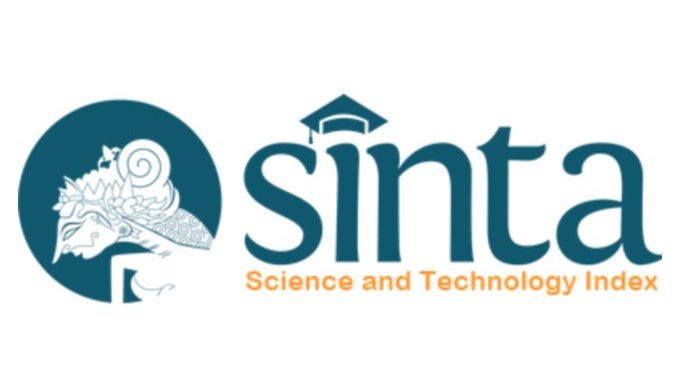Diagnosis and Management of Erythroderma
DOI:
https://doi.org/10.55175/cdk.v51i6.1086Keywords:
Exfoliative dermatitis, erythroderma, inflammation, skin disorder, scalesAbstract
Erythroderma, also known as exfoliative dermatitis, is a diffuse inflammation-related skin disorder characterized by redness and scales affecting more than 90% of the body surface area. Its incidence is around 1 per 100,000 adults, with a mortality rate of 16% each year, especially in immunodeficient patients. Several conditions as the main cause include psoriasis (23%), atopic dermatitis (16%), drug hypersensitivity reactions (15%), and cutaneous T-cell lymphoma (CTCL) or Sezary syndrome (5%). Erythroderma is a potentially life-threatening condition requiring diagnosis, identification of the etiology, and appropriate management.
Downloads
References
Khaled A, Sellami A, Fazaa B, Kharfi M, Zeglaoui F, Kamoun MR. Acquired erythroderma in adults: A clinical and prognostic study. J Eur Acad Dermatology Venereol. 2010;24:781–8.
Grant-Kels JM, Fedeles F, Rothe MJ. Exfoliative dermatitis. In: Goldsmith LA, Katz SI, Gilchrest BA, et al, editors. Fitzpatrick’s dermatology in general medicine, 8e. Chapter 23. New York: The McGraw-Hill Co.; 2012.
Okoduwa C, Lambert WC, Schwartz RA, Kubeyinje E, Eitokpah A, Sinha S, et al. Erythroderma: Review of a potentially life-threatening dermatosis. Indian J Dermatol. 2009;54:1–6.
Shirazi N, Jindal R, Jain A, Yadav K, Ahmad S. Erythroderma: A clinico-etiological study of 58 cases in a tertiary hospital of North India. Asian J Med Sci. 2015;6:20–4.
Willerslev-Olsen A, Krejsgaard T, Lindahl LM, Bonefeld CM, Wasik MA, Koralov SB, et al. Bacterial toxins fuel disease progression in cutaneous T-cell lymphoma. Toxins (Basel) 2013;5:1402–21.
Salami TAT, Enahoro Oziegbe O, Omeife H. Exfoliative dermatitis: Patterns of clinical presentation in a tropical rural and suburban dermatology practice in Nigeria. Int J Dermatol. 2012;51:1086–9.
Ellis J, Lew J, Brahmbhatt S, Gordon S, Denunzio T. Erythrodermic psoriasis causing uric acid crystal nephropathy. Case Rep Med. 2019;2019:8165808.
Miyashiro D, Sanches JA. Erythroderma: A prospective study of 309 patients followed for 12 years in a tertiary center. Sci Rep. 2020;10:9774.
Hoxha S, Fida M, Malaj R, Vasili E. Erythroderma: A manifestation of cutaneous and systemic diseases. EMJ Allergy Immunol [Internet]. 2020. Available from: https://www.emjreviews.com/allergy-immunology/article/erythroderma-a-manifestation-of-cutaneous-and-systemicdiseases/?site_version=EMJ. DOI: 10.33590/emjallergyimmunol/19-00182.
Cuellar-Barboza A, Ocampo-Candiani J, Herz-Ruelas ME. A practical approach to the diagnosis and treatment of adult erythroderma. Actas Dermosifiliogr. 2018;109:777–90.
Mistry N, Gupta A, Alavi A, Sibbald RG. A review of the diagnosis and management of erythroderma (generalized red skin). Adv Ski Wound Care 2015;28:228–36.
Bernengo MG, Quaglino P. Erythrodermic CTCL: Updated clues to diagnosis and treatment. G Ital di dermatologia e Venereol organo Uff Soc Ital di Dermatologia e Sifilogr. 2012;147:533–44.
Bruno TF, Grewal P. Erythroderma: A dermatologic emergency. CJEM. 2009;11:244–6.
Lo Y, Tsai TF. Updates on the treatment of erythrodermic psoriasis. Psoriasis (Auckland, NZ) 2021;11:59–73.
Singh RK, Lee KM, Ucmak D, Brodsky M, Atanelov Z, Farahnik B, et al. Erythrodermic psoriasis: Pathophysiology and current treatment perspectives. Psoriasis (Auckland, NZ) 2016;6:93–104.
Shao S, Wang G, Maverakis E, Gudjonsson JE. Targeted treatment for erythrodermic psoriasis: Rationale and Recent Advances. Drugs 2020;80:525–34.
Wan J. Atopic dermatitis and erythroderma. In: Rosenbach M, Wanat KA, Micheletti RG, et al, editors. Inpatient dermatology. Cham: Springer Internat Publ; 2018. p. 299–302.
Gelbard CM, Hebert AA. New and emerging trends in the treatment of atopic dermatitis. Patient Prefer Adherence 2008;2:387–92.
Wróbel J, Tomczak H, Jenerowicz D, Czarnecka-Operacz M. Skin and nasal vestibule colonisation by Staphylococcus aureus and its susceptibility to drugs in atopic dermatitis patients. Ann Agric Environ Med. 2018;25:334–7.
Geoghegan JA, Irvine AD, Foster TJ. Staphylococcus aureus and atopic dermatitis: A complex and evolving relationship. Trends Microbiol. 2018;26:484–97.
Jadotte YT, Schwartz RA, Karimkhani C, Boyers LN, Patel SS. Drug eruptions and erythroderma. In: Hall JC, Hall BJ, editors. Cutaneous drug eruptions: Diagnosis, histopathology and therapy. London: Springer London; 2015. p. 251–8.
Cuellar-Barboza A, Ocampo-Candiani J, Herz-Ruelas ME. A practical approach to the diagnosis and treatment of adult erythroderma. Actas DermoSifiliográficas (English Ed) 2018;109:777–90.
Katsarou A, Armenaka M. Atopic dermatitis in older patients: Particular points. J Eur Acad Dermatol Venereol. 2011;25:12–8.
Effendy KM, Sukohar A. Eritroderma et causa erupsi obat pada wanita berusia 50 tahun. J Medula Unila 2017;7:70.
Fujimura T, Amagai R, Kambayashi Y, Aiba S. Topical and systemic formulation options for cutaneous T cell lymphomas. Pharmaceutics 2021 Feb;13(2):200.
Downloads
Published
How to Cite
Issue
Section
License
Copyright (c) 2024 Nurrul Izza Misturiansyah, Umi Miranti, Ayu Lilyana Nuridah, Muhammad Irsyad Amien, R. Ristianto Yoga

This work is licensed under a Creative Commons Attribution-NonCommercial 4.0 International License.





















